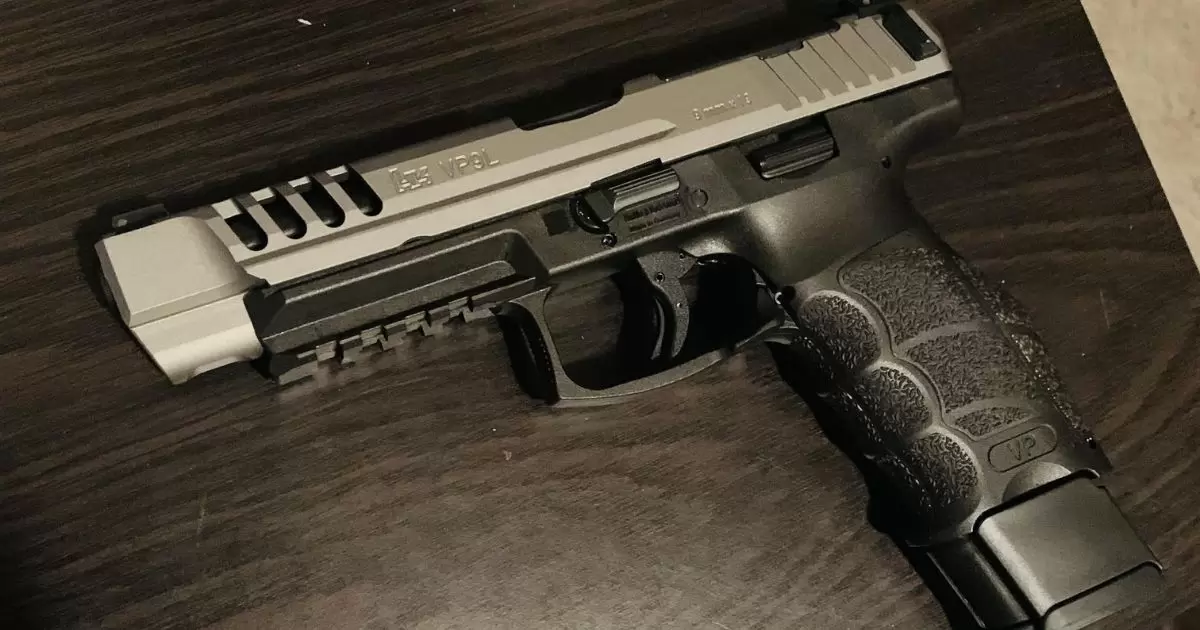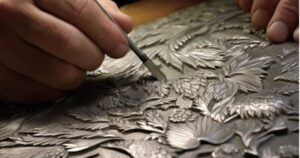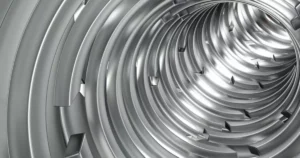Stainless steel is a metal alloy that resists corrosion and retains its appearance through a protective oxide layer. Cerakote is a ceramic coating sprayed onto materials to change their color and protect metal surfaces.
Can you cerakote stainless steel? Applying a tough, weatherproof finish can boost stainless steel’s aesthetics and protection against wear. While stainless naturally repels rust, cerakote creates barrier beyond chromium’s oxide film for enhanced functionality.
Cerakote bonds with metal substrates through heating and curing to form a slick, non-porous skin matching hundreds of customized shades. On stainless, it safeguards against UV exposure denting natural luster alongside abrasion resistance exceeding bare alloy alone. Yet compatibility between coating and protected metal requires ensuring correct preparation and application.
How does the cerakote process work on stainless steel?
Cerakote bonds robustly to stainless through meticulous preparation. First, potential contaminants require removal via degreasing. Then mechanical or chemical methods abrade the surface at a microscopic level. This promotes strong adhesion for the coating to form an integral bond. is stainless steel real silver?
Applied through electrostatic spraying, cerakote forms an ultra-thin protective skin. Infrared lamps gradually heat and cure multiple thin layers. As they bake, molecules cross-link into an exceptionally tough yet flexible film barely thicker than a human hair.
Surface preparation required
Proper surface preparation of stainless steel is important for Cerakote to properly bond. The first step is to lightly scuff the metal’s surface using an abrasive mesh or sandpaper. This etches away the outer crystalline layer and readies the stainless steel for bonding.
Scuffing exposes a fresh crystalline structure for the Cerakote to strongly adhere to. After scuffing, the metal must be thoroughly degreased to remove any residues or oils. Degreasing ensures nothing remains on the surface that could prevent molecular bonding between the stainless steel and Cerakote.
Application of the cerakote coating
The Cerakote coating is applied using an electrostatic process. The liquid Cerakote is loaded into the spray gun, which uses an electrical charge. This charge allows the fine liquid particles to be evenly distributed across all surfaces, including recessed welds and contoured areas.
The electrostatic attraction self-levels the coating and prevents dripping or uneven application lines. It evenly coats all angles and contours without the need for multiple layered applications. The electrostatic process results in a smooth, even finish without visible lap lines or imperfections once cured.
What types of stainless steel accept cerakote?
Most common 300 series stainless steel alloys are suitable for Cerakote when the surface is properly treated. Alloys like 18/8 and 18/10 stainless steel consisting of 18% chromium and 8-10% nickel readily accept Cerakote finishes when the surface is meticulously prepared.
Higher chromium content alloys need more texturing to allow for strong adhesion of the Cerakote layer. The brushed microscopic patterns provide more nooks and crannies for the Cerakote to mechanically bond to compared to a polished surface.
18/8 versus 18/10 stainless grades
The 18/8 and 18/10 stainless steel grades are commonly used for Cerakote applications. Both contain 18% chromium for corrosion resistance, while the 18/8 has 8% nickel and 18/10 has 10% nickel. The nickel content makes little difference in terms of accepting a Cerakote finish.
It is crucial to carefully degrease and etch away any barrier oxides on the surface before spraying begins. This allows the Cerakote particles to bond directly with the fresh metal at a molecular level. With thorough cleaning, both the 18/8 and 18/10 grades will achieve long-lasting adhesion of the protective Cerakote coating.
Brushed vs. polished surface textures
The surface texture of the metal substrate plays an important role in how well Cerakote can adhere. A brushed finish provides microscopic crevices and grooves cut into the metal from the brushing direction. These natural anchor points allow the Cerakote particles to mechanically interlock with the surface for a strong grip.
More effort is required to etch away the polished surface using conditioning chemicals to impart texture and allow molecular links between the metal and Cerakote. The brushed texture inherently assists the Cerakote’s bonding capability compared to a glossy polished substrate.
When is cerakote a better choice than bare stainless?
There are certain situations where Cerakote provides important advantages over leaving stainless steel uncoated. Environments involving extreme heat, abrasive conditions, or exposure to hazardous chemicals demand maximum protection. The resilient Cerakote safeguards the substrate from corrosion and damage better than uncoated stainless steel.
It also allows for customization with a variety of durable colors and textures. The supplementary shielding effect makes Cerakote a superior choice over bare metal for demanding applications under difficult operational conditions.
Increased surface durability
Cerakoting a surface provides significantly more resilience against abrasion and damage compared to leaving the substrate bare. The Cerakote acts as a protective overlay that reinforces the metal underneath. It forms an exceptionally abrasion resistant and impact tolerant layer of ceramic material on the surface.
Over time in tough environments, this extra layer of Cerakote can better withstand scuffs, scrapes, impacts and general wear and tear than the uncoated metal could on its own. Cerakote effectively increases the longevity and service life of substrates such as firearms and machinery used in harsh conditions by guarding against degradation and premature wear of the bare material.
Protection from harsh chemicals
Its non-porous structure repels penetration from corrosive liquids that readily degrade other surface coatings, restoring substrates to like-new condition years later.
I hope this overview has helped explain cerakote’s advantages for customizing and defending stainless steel in various applications. Please let me know if any part of the process remains unclear or requires additional details.
Which cerakote colors/finishes match stainless steel?
There are certain Cerakote colors that complement the look of stainless steel surfaces well. For industrial machinery and equipment operating in harsh environments, darker colors like anthracite gray and bronze provide an attractive and functional match.
The darker tones minimize unwanted surface reflections and glare that could occur from bright finishes on large stainless steel pieces. They also help conceal marks and hiding minor scratches or abrasions over time. Certain dark or light colors suit different stainless steel applications aesthetically.
Tactical colors for Equipment
When coating equipment used in rugged outdoor tactical settings, camouflage Cerakote colors provide important advantages over traditional paint. Tools like firearms, knives and other gear benefit from coatings in break-up patterns of earth tones like greens, browns and blacks.
These camouflage shades allow the equipment to blend into natural surroundings like foliage and terrain much like clothing. Camouflage patterns matched to the environment help conceal position while the resilient Cerakote protects the equipment itself during long-term harsh use much better than a paint coating.
When is cerakote a better choice than bare stainless?
Cerakote provides an excellent option for renewing old stainless steel items and customizing possessions. Re-coating gas tanks, rigging hardware or other equipment allows restoration of like-new vibrancy and visual appeal. As stainless steel ages, it can lose luster and take on dull tones.
It also allows for unique patterns, logos or other designs to personalize gear for enjoyable identification and display of individuality. Whether restoring dull metal or adding one-of-a-kind touches, Cerakote proves better than exposed stainless steel for both functional preservation and customizable aesthetic appeal on valued equipment and personal effects.
Custom cerakote designs
One-of-a-kind graphics transform ordinary stainless into statement pieces through skilled airbrushing employing multiple shades in intricate layered designs. Whether highlighting stainless steel’s refined gleam or enhancing utility, cerakote matches selections to any environment through its paint-like appearance combined with a coating’s strength and resilience. Suitable preparation ensures a finish becoming virtually indistinguishable from the bare material over decades of faithful service and attention.
When is cerakote a better choice than bare stainless?
In industrial settings where tools experience hard use, Cerakote provides advantages over bare stainless steel. Jobsites that expose equipment to abrasions and marring accelerate degradation of raw metal surfaces over time. However, Cerakote forms a resilient protective layer that defends stainless alloys from getting scratched and wearing down prematurely from tough jobsite conditions.
It also enables customizable colors to help organize tools and tell them apart easily. Vivid shades aid workers in identifying their individual possessions and keeping track of critical gear. Whether fending off scratches or allowing personalized colors, Cerakote keeps stainless steel equipment in service longer through durability and organizational upgrades better than leaving it uncoated in challenging work environments.
Protection from harsh chemicals
One important advantage of Cerakoting stainless steel is the protection it provides against damage from harsh chemicals. Naked stainless alloy is susceptible to corrosion and degradation when exposed to acids, bases, solvents and other dangerous liquids on a long-term basis. However, the Cerakote acts as an impermeable layer shielding the metal substrate.
Any spilled or splashed chemicals bead up and run off the Cerakote surface instead of remaining in contact with and corroding the stainless steel beneath. This defensive barrier guards the alloys from long-term chemical exposure far better than leaving them bare.
How do you care for cerakote on stainless steel?
While Cerakote forms a very durable and protective finish, it still needs periodic care to maintain its brilliance. Regular cleaning helps prevent contamination buildup that could degrade the coating more rapidly over time. Gentle washing with a mild soap and water removes dirt, debris and residue exposing any small scratches before they worsen.
This prevents damage from compounding. Occasional polishing using a non-abrasive microfiber cloth restores luster and reveals accumulated marks for removal before they penetrate the Cerakote. Simple cleaning and light polishing extends the resilient finish’s lifespan, keeping the stainless steel looking as good as new.
Inspecting for damage and recoat needs
Periodically scanning equipment for wear signals sections benefiting from a light sanding and reapplication, extending protective beauty for another decade or more.
Cerakote spares stainless demanding stripping or replacement, maintaining tools and appliances in excellent condition appearance-wise and structurally even following enthusiastic use thanks to its molecular bond fully preserving substrate integrity underneath handsomely and functionally pigmented exteriors.
How do you care for cerakote on stainless steel?
Keeping Cerakote on stainless steel looking its best doesn’t require much effort. Simple cleaning after each use is sufficient to retain an as-new shine. A quick rinse with water and gentle wipe down with a microfiber cloth removes any residue or debris that could mar the surface over time if left unchecked.
Between outings, sheltering Cerakoted items prevents direct sun or weather exposure that hastens finish fade more than occasional use. Proper storage indoors out of damp or harsh outdoor elements safeguards the durable Cerakote in between activities.
Proper cleaning without abrasives
It is important to clean Cerakoted stainless steel correctly to maintain the finish and protect the substrate. Harsh abrasive materials can potentially damage the coating layer over time. After cleaning with the damp cloth, the surface is quickly buffed dry to avoid water spotting.
Leftover moisture could lead to corrosion of unsealed steel if spotted areas are not dried thoroughly. A quick wipe down with a clean dry cloth prevents issues. This simple abrasive-free technique sufficiently removes residues without risk to the durable Cerakote surface.
How do you care for cerakote on stainless steel?
To maintain Cerakote on stainless steel and catch issues early, periodic visual inspections are important. Regular visual checks, even just brief glances, allow for noticing small defects or blemishes before they worsen. Catching imperfections while still minor could prevent needing a full refurbishing down the road.
By catching chips, scratches or fading early, repairs are simpler through methods like touch-up rather than complete stripping and reapplication. Brief looks over a Cerakoted surface monthly or as part of routine care enable spotting superficial flaws in their beginning stages. Quick checks significantly lessen potential damage progression saving time and money for larger restoration work versus fast minor fixes.
Inspecting for damage and recoat needs
Periodic examinations find minor wear amendable to light wet-sanding and reapplication of a matching topcoat in vulnerable crevices. With very little ongoing care, cerakote maintains stainless steel’s good looks and performance far surpassing the lifespan of bare alloy. Its fast-healing molecular structure resists corrosion better than lesser topcoats through decades of reliable, low-maintenance service.
| Process Step | Description |
| Surface Preparation | Stainless steel must be cleaned and lightly abraded to allow cerakote to bond tightly. |
| Application | Cerakote is applied in thin coats using an electrostatic spray gun for full coverage. |
| Curing | Infrared heat bakes and cross-links the cerakote layers to form a durable protective finish. |
| Protection | The cured cerakote forms a non-porous skin that protects stainless from wear, chemicals and weathering. |
| Compatibility | Many common stainless alloys like 18/8 and 18/10 accept cerakote when properly prepared. |
| Surface Finish | Brushed textures provide more grip for cerakote than polished surfaces. |
| Durability | Cerakoted stainless resists abrasion and impact damage better than bare metal on its own. |
| Customization | Cerakote allows coloring stainless in many shades for aesthetics, identification or matching environments. |
| Care | Gentle cleaning and periodic inspections keep the cerakote looking like new with minimal effort. |
FAQs:
Does cerakote protect as well as bare stainless?
Cerakote forms a molecular bond to create a non-porous skin that provides even better protection against corrosion and wear than stainless on its own.
Can any stainless alloy be cerakoted?
Regular cleaning with a mild soap and water is usually all that’s needed. Occasional light wet-sanding and touch-up coating can repair small defects for an as-new appearance with minimal effort.
What metals can be Cerakoted?
Metals like aluminum, steel, carbon fiber can be Cerakoted. Cerakote bonds well to metal substrates.
Is Cerakote permanent?
Yes, Cerakote is designed to be a permanent and durable finish if applied correctly.
Can aluminum be Cerakoted?
Yes, aluminum can be and is commonly Cerakoted. Cerakote adheres very well to aluminum.
Is stainless steel good for guns?
Stainless steel is appropriate and commonly used for firearms. It is corrosion and wear resistant.
Conclusion:
In conclusion, the answer to the question Can you Cerakote stainless steel? is a resounding yes. Cerakoting stainless steel is not only possible but also highly recommended for enhancing its durability, corrosion resistance, and aesthetic appeal. The ceramic-based coating provides a tough, non-stick surface that can withstand extreme temperatures, chemicals, and abrasions, making it an ideal choice for various applications, including firearms, knives, tools, and industrial equipment.
It’s crucial to follow the proper surface preparation techniques and application methods to ensure optimal adhesion and long-lasting results. Consulting with professional Cerakote applicators or thoroughly researching the process is advisable, especially for those new to the world of Cerakoting.
Embrace the potential of Cerakoting stainless steel, and unlock a world of customization, protection, and enhanced performance for your valuable possessions or projects.








